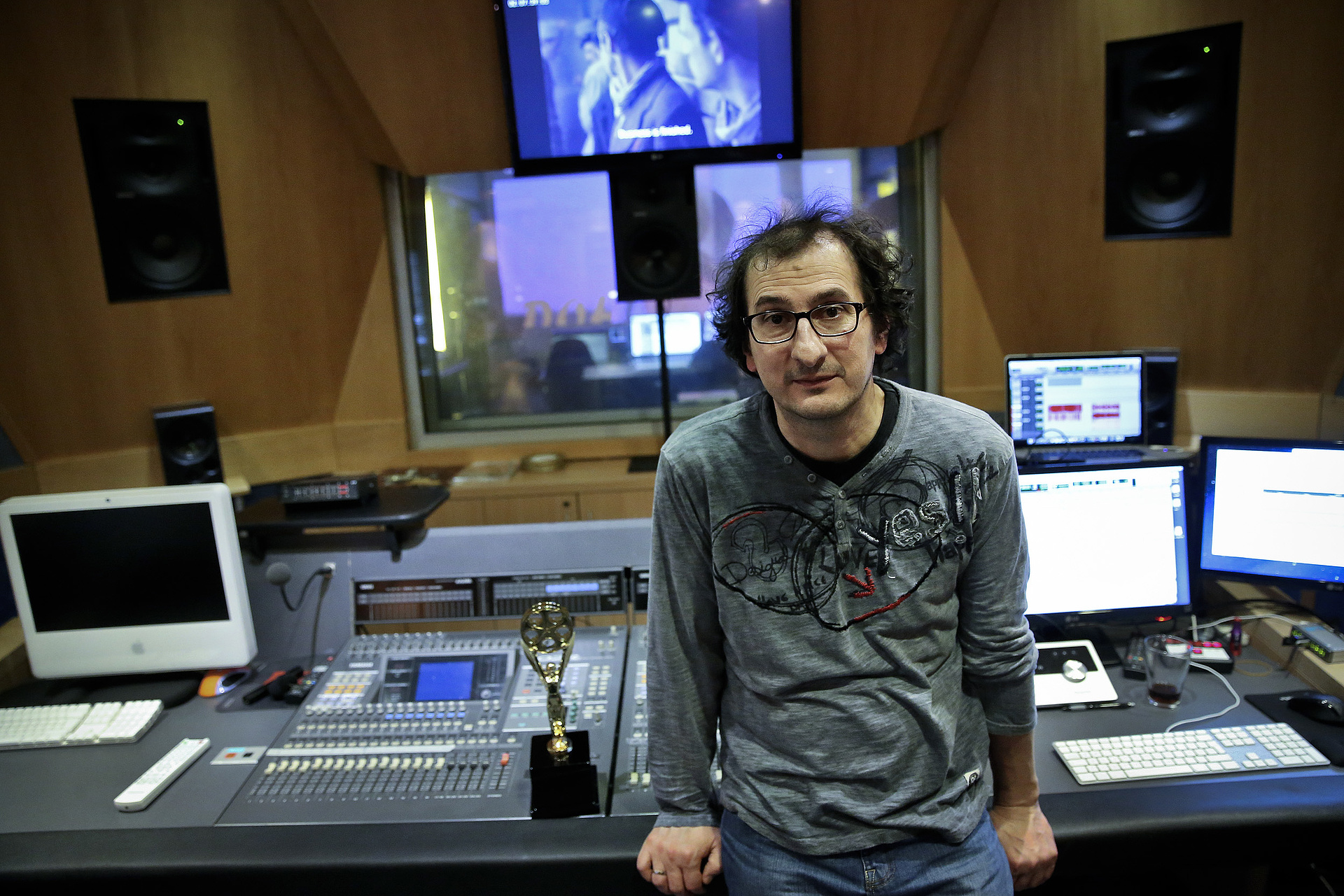"All Sounds Are Equal" - Interview
With his long, subjective cuts, László Nemes created an original imagery. Is there anything special in the way he deals with the sound?
László thinks about the movie in a complex way, and, besides visuality, he pays particular attention to the sound as well. The peculiarity of this is probably that for him all sounds are equally important. With other directors, dialogues and story-telling are the most important issues, with music, then noise and atmosphere only following them on the priority list. However, László tends to struggle for long with different background elements, for example with the hushed conversation of the hat-making girls, because he considers it important to have all the elements of the movie credible. This craftsmanship, this handcrafted approach is what makes his movies very unique and analogue in quotation marks.
What concept did you have in mind when approaching the sound design of 'Sunset'?
There were no audio documents from what we could learn about the sound of Budapest in the 1910s, so we had to rely on our fantasy, like in 'Son of Saul'. Our basic idea was to create a lively metropolis atmosphere as it was a thriving era in the life of the Austro-Hungarian Monarchy. The mechanization has begun, the automotive industry has been developing quickly, and in the streets of the capital there were more than twenty types of cars whose sounds were developed based on, among other things, the sound of a classic Ford model T. We also tried to dissolve the misconceptions associated with the era. For example, a widespread stereotype is that back then hansom-cabs were plying on the cobblestone streets of Budapest, but the film's preliminary research revealed that there were very few cobblestone streets, yet there were many dirt roads and freshly asphalted roads, which in our case greatly influenced the atmosphere of the vehicles and the workers in the background.
With the long, subjective camera movements following the protagonist, with 'Sunset', László Nemes aimed at creating an immersive world in which the viewer may be absorbed. How can you support this effect with the sounds?
From the technical point of view, the immersive movie sound means that sounds do not come only from the front or from the sides, but also from above. Contrary to vision, we hear sounds in 360 degrees around the head, and technical enhancements such as Dolby Atmos or Aurora 3D have made it possible to hear sounds coming from all directions. Although the 3D sound mixing technologies listed above are not currently available in Hungary, we have already asked the question with the 'Son of Saul' as to what the immersive sound means from a psychological point of view. With 'Son of Saul' and 'Sunset', we wanted to achieve this effect, too, even though we did not always place the sounds in a conventional way. In a movie, dialogue is usually played in the middle, so that actors can be well understood, and this is surrounded by movie sound and atmosphere. We, however, spread the sounds and tried to create a complex, rich sound carpet from various acoustic elements, such as the whispering of Austrian lords or the sound of asphalting. This is also needed in Nemes' films, because the background is usually blurry due to the subjective camera movements that adhere to the protagonist and this makes it possible to counteract the limited visual perspective with the acoustic dimension extending in depth and width. It is much like completing the lines with our imagination as we read.

Tamás Zányi (Photo: István Huszti)
'Son of Saul' did not have a traditional soundtrack. How about 'Sunset'?
For 'Sunset', László Melis composed a separate, pithy soundtrack, which is almost always present in the film. There is much diegetic dance music, that is, source music resulting from the movie's storyline that had been written by Melis in advance in order to be able to play it while shooting the scenes. The non-diegetic score, also known as instrumental soundtrack, plays an important role in the immersive effect of the film. Similarly to 'Son of Saul', there are no complicated symphonic melodies here either, but few, long-held notes. We have been experimenting for a long time before creating a unified movie soundtrack image for 'Sunset', but it was worth it because it is beautifully serving the movie. This is one of his best works by László Melis, who until his death at the very beginning of this year worked on the soundtrack of 'Sunset'.
With 'Son of Saul', you received the Vulcan Award at the Cannes Film Festival, and the Golden Reel Award at the Motion Picture Sound Editors Awards. How did these honours affect your career? Have you got international requests since then?
Some people approached me after the 'Son of Saul' and suggested to work together, but in the end these cooperations have never been realised, due to lack of time and capacity. In addition to foreign relations, I consider it equally important to have our work acknowledged and to spread awareness about it. Though we do not know each other, I received e-mails for example from Val Kuklowsky or Richard King, Oscarwinning sound designer for Christopher Nolan, in which they wrote about how they liked the sound of our movie. These are great honours. I'm also proud of the fact that in recent years our sound studio has become a creative venue, where more and more films are being made, including Ildikó Enyedi's Oscar-nominated film, 'On Body and Soul', or the post-production of 'One Day', a Hungarian movie recently awarded in Cannes. Regarding these successes, a lot of credit is due to my colleagues and our sound team. We hope that we can continue this creative cooperation in the Hungarian films to be made in the future!
Tamás Soós
